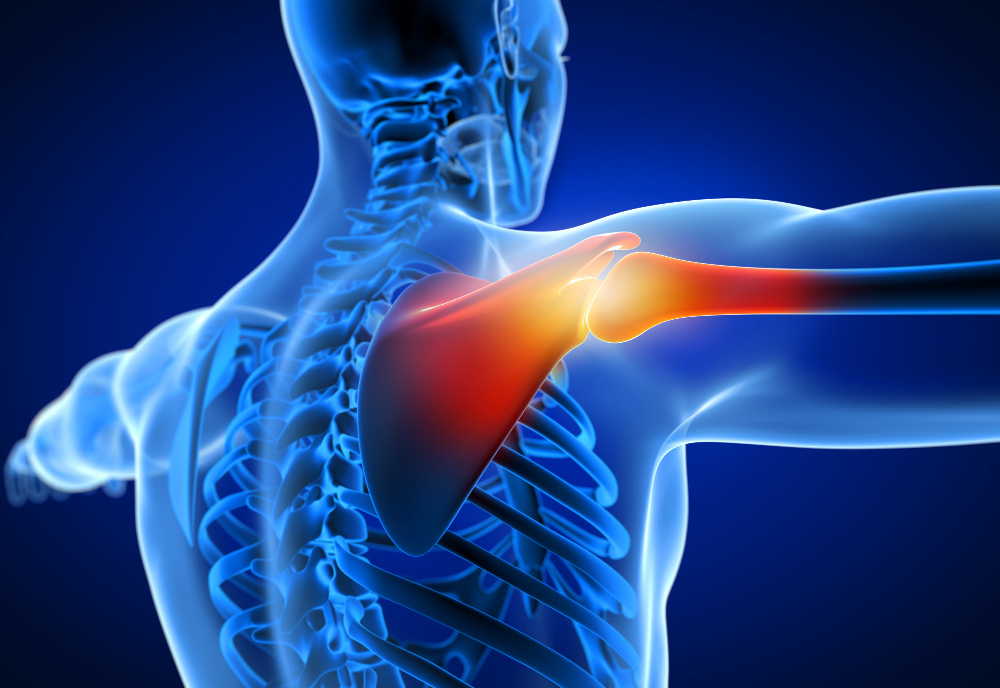This is a common question patients ask regarding an injury to their shoulders. Both injuries can vary from mild injuries that are able to heal with rest and physical therapy to more severe injuries requiring surgical repair or reconstruction. Dr. Capogna specializes in complex shoulder repair and reconstruction in both instances.
Read below to learn more about shoulder separation vs. shoulder dislocation, how they are different, and the treatment options for both.
Shoulder Separation
The shoulder joint itself is the ball and socket joint composed of the upper portion of the humerus (ball) and the glenoid (socket). Above the shoulder joint is another joint called the acromioclavicular (AC) joint. This joint is formed by the lateral end of the clavicle as it meets with the anterior bony “hood” of the shoulder blade, otherwise known as the “acromion.”
This joint has cartilage and even a cushioning disc similar to other joints of the body. The AC joint is stabilized by many ligaments that help provide stability from front to back (the AC ligaments) and proximal to distal (the coracoclavicular (CC) ligaments). A shoulder separation is an injury to the ligaments that surround the AC joint (the AC and CC ligaments).
You may have a shoulder separation if you fall directly onto the point of your shoulder such as a fall off a ladder or while skiing. Athletes such as hockey players can also sustain a shoulder separation by hitting the point of their shoulder directly into the boards.
Grades of this injury vary from mild sprains of these ligaments (Types 1 and 2) to complete disruption and separation of the clavicle from the acromion (Types 3-5). Types 1 and 2 are treated with rest, anti-inflammatories, and physical therapy with complete recovery expected within 4-8 weeks. Type 3 injuries are controversial with most undergoing non-surgical treatment with surgery reserved for people who have pain or chronic instability sensations if the ligaments do not heal.
Types 4 and 5 are more severe injuries and are treated with surgical repair or reconstruction of the CC and AC ligaments.
Shoulder Dislocation
Shoulder dislocation is a true dislocation of the ball (upper humerus) off of the socket (glenoid). A dislocation often results from a traumatic injury with the arm in an elevated (abduction) and externally rotated position.
This injury is most common in younger adolescent athletes. An MRI is always required after a shoulder dislocation. On MRI, clinicians are investigating to see if there is an injury to the labrum of the shoulder. The labrum is the soft tissue bumper that deepens the socket and helps hold the ball stable on the socket.
Patients under the age of 20 with an MRI-confirmed tear of the labrum are often treated with the arthroscopic repair of the labrum due to a high recurrence rate of dislocation without surgery. Patients over 20 years old are often treated with a trial of rest, anti-inflammatories, and physical therapy to see if the labrum will heal and provide continued stability to the shoulder.
If the labrum does not heal and/or the shoulder continues to dislocate from the socket, then surgical repair is often required for older non-athletes as well.
As patients age, shoulder dislocation can lead to injury of other structures, such as the rotator cuff tendons. In patients over the age of 50, a dislocation can lead to a large or massive tear of the rotator cuff, which leads to greater instability, pain, weakness and dysfunction.
Large rotator cuff tears in this situation almost always require surgical repair to maintain stability and function to the shoulder.
Shoulder separation vs shoulder dislocation are two very different injuries of the shoulder. It’s important to know the differences and how they are treated. If you are concerned that you may have sustained a shoulder separation or dislocation contact Dr. Capogna @ 516-627-8717 or request an immediate appointment at https://www.orthopaedicassociatesmanhasset.com/request-an-appointment/.

